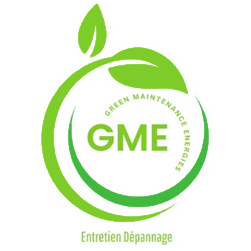Purging a radiator is a straightforward yet crucial maintenance task that ensures the optimal functioning of your heating system. Air trapped in your radiators can significantly hinder their performance, causing uneven heating and increased energy consumption. By efficiently removing this air, you're not just optimizing comfort but also maximizing energy efficiency and extending the lifespan of your heating system.
Understanding why purging your radiators is essential begins with recognizing the role of air in your heating system. As water circulates, air can become trapped, forming bubbles that prevent hot water from effectively heating the radiator. This leads to cold spots and inefficient heating, prompting the need for regular maintenance. Ensuring that your radiators are free from air can markedly improve their heating capacity, thus making your home more comfortable and your heating system more cost-effective.
The ideal time to purge your radiators is at the onset of the heating season, typically in the autumn. This timing ensures that your system is ready to operate at full capacity when the temperature drops. However, don’t wait until autumn if you notice signs of inefficiency such as radiators that are cold at the top or emitting gurgling sounds. These are clear indicators that purging is necessary, possibly even after any significant maintenance work on the heating system or following a system refill.
To perform a purge, you'll need a few basic tools: a purge key, a flat-head screwdriver, a container, and a cloth. These items are affordable and ensure that the process is both safe and effective. Start by ensuring your heating system is turned off and that the radiators are cool to the touch. This step is crucial to prevent burns and ensure a safer working environment.
Once your radiators are cool, locate the purge valve, which is typically found at the top side of the radiator. Insert the purge key or screwdriver into the valve, and position a container beneath it to catch any escaping water. Slowly turn the valve counterclockwise to release the air. You will hear a hissing sound as the air escapes. Once water begins to flow steadily, close the valve by turning it clockwise.
With the air removed, restart your heating system and check each radiator to ensure they are heating evenly. It’s advisable to start purging with the radiator closest to the boiler and work your way to the farthest. This methodical approach ensures that all air is effectively removed from the system.
After purging, it’s essential to check your boiler’s pressure. Air removal can sometimes cause a drop in pressure, which might require topping up with water to maintain the system’s optimal pressure level. A pressure gauge on your boiler will typically indicate if more water is needed.
Regular purging not only ensures efficient heating but also reduces your energy bills. By maintaining your heating system, you’re preventing wear and tear that could lead to costly repairs or replacements. A well-maintained system also means fewer disruptions during the cold months, providing consistent warmth and comfort.
In conclusion, regular radiator maintenance through purging is a simple yet powerful way to ensure your home remains warm and energy-efficient throughout the colder months. By following these steps and being attentive to your system’s needs, you can significantly prolong the life of your radiators and heating system. Should you encounter persistent issues, however, it’s advisable to consult a professional to diagnose and remedy any underlying problems, ensuring your system remains in peak condition all year round.





